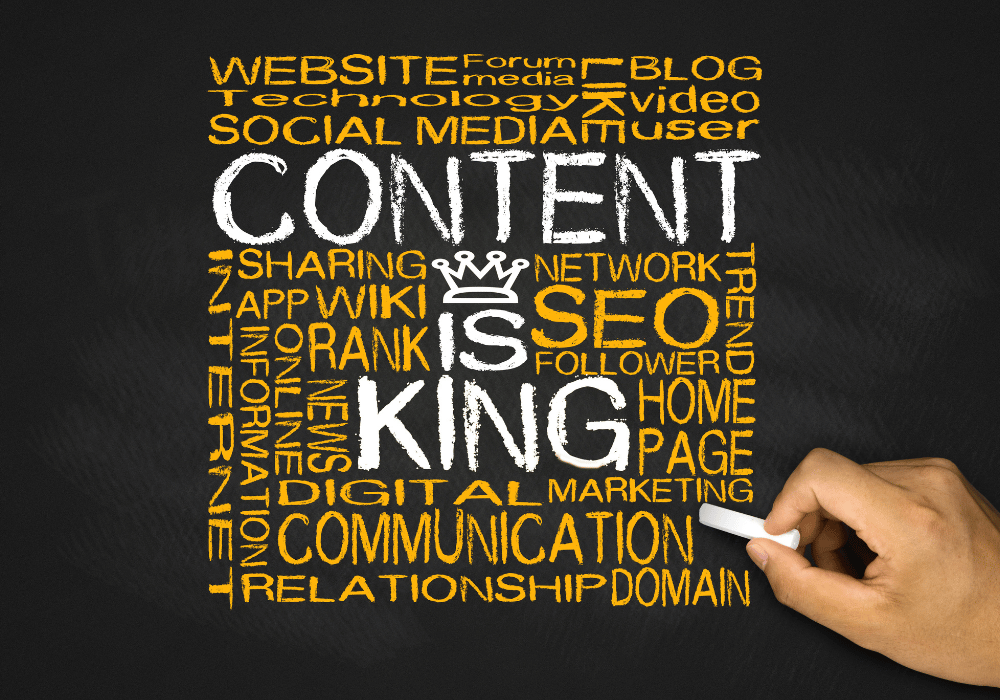Content Marketing VS Paid Ads: Which Is Right for Your Business?

In today’s competitive digital landscape, small business owners face a crucial decision: should you invest in content marketing or paid ads? This choice can significantly impact your business’s growth, customer engagement, and return on investment (ROI). It’s essential to understand the strengths and weaknesses of both strategies to make an informed decision. In this guide, we’ll explore the advantages and disadvantages of content marketing and paid ads, factors to consider when choosing between the two, and how to integrate both for a well-rounded marketing plan. Let’s dive in!
Understanding Content Marketing
 What Is Content Marketing?
What Is Content Marketing?
Content marketing involves creating and sharing valuable, relevant, and consistent content to attract and engage a clearly defined audience. The goal is to drive profitable customer actions while building trust and authority in your industry. Content marketing can take many forms, including blog posts, videos, infographics, eBooks, and social media updates.
Advantages of Content Marketing
1. Builds Trust and Authority:
Consistently publishing high-quality content positions your business as an industry expert. Over time, this builds trust with your audience and establishes your brand as a go-to resource for information.
2. Long-Term ROI:
Unlike paid ads, content marketing offers long-lasting benefits. A well-written blog post can continue to attract traffic and generate leads for months or even years after it’s published.
3. Improves SEO:
Quality content helps improve your website’s search engine ranking. By incorporating relevant keywords naturally into your content, you can boost your visibility and attract organic traffic from search engines.
Disadvantages of Content Marketing
1. Time-Consuming:
Creating high-quality content requires significant time and effort. From brainstorming topics to writing and editing, content production can be a lengthy process.
2. Delayed Results:
Content marketing is a long-term strategy. It can take several months to see tangible results, making it less suitable for businesses seeking immediate returns.
3. Requires Consistency:
To maintain your audience’s interest and trust, you need to consistently publish new content. This can be challenging for small businesses with limited resources.
Understanding Paid Ads
What Are Paid Ads?
Paid advertising involves paying to promote your business’s products or services through various channels, such as Google Ads, Facebook Ads, and Instagram Ads. These ads can be in the form of search ads, display ads, social media sponsored posts, and more.
Advantages of Paid Ads
1. Immediate Results:
Paid ads can generate traffic and leads almost instantly. Once your ad campaign is live, you can start seeing results within hours or days.
2. Targeted Reach:
Paid ads allow you to target specific demographics, interests, and behaviours. This precision ensures that your ads are seen by the right audience, increasing the chances of conversion.
3. Scalability:
Paid advertising campaigns can be easily scaled up or down based on your budget and goals. This flexibility allows you to adjust your strategy in real-time for optimal results.
Disadvantages of Paid Ads
1. Costly:
Running paid ad campaigns can be expensive, especially in competitive industries. The costs can quickly add up, and there’s no guarantee of a positive ROI.
2. Short-Term Impact:
Once you stop paying for ads, the traffic and leads generated will cease. Paid ads offer quick results but don’t provide long-term benefits like content marketing.
3. Ad Fatigue:
Over time, your target audience may become desensitized to your ads, resulting in decreased engagement and effectiveness. Regularly updating your ad creatives is necessary to combat ad fatigue.
Factors to Consider When Choosing
 Budget Constraints
Budget Constraints
One of the most critical factors to consider is your budget. Content marketing generally requires a lower upfront investment compared to paid ads. However, it demands a continuous commitment of time and resources. On the other hand, paid advertising requires a substantial financial investment but can deliver quicker results. Assess your budget to determine which strategy aligns with your financial capabilities.
Target Audience
Understanding your target audience’s preferences and behaviours can help you choose the right strategy. If your audience values in-depth information and engages with content regularly, content marketing may be more effective. Conversely, if your audience spends a lot of time on social media or frequently searches for products online, paid ads could be the better option.
Business Goals
Align your marketing strategy with your business goals. If your primary objective is to establish your brand as a thought leader and build long-term relationships with customers, content marketing is ideal. If you need to drive immediate sales and leads for a product launch or promotion, paid advertising can deliver faster results.
Integrating Both Strategies
Creating a Balanced Approach
For the best results, consider integrating both content marketing and paid ads into your marketing strategy. This hybrid approach allows you to leverage the strengths of both strategies while mitigating their weaknesses.
Promoting Content with Paid Ads
Use paid ads to promote your high-quality content and reach a broader audience. For example, you can run Facebook ads to drive traffic to your blog posts or use Google Ads to promote your eBooks and whitepapers. This approach combines the immediate reach of paid ads with the long-term benefits of content marketing.
Retargeting and Remarketing
Paid ads can be highly effective for retargeting and remarketing to users who have already engaged with your content. By targeting these warm leads with personalized ads, you can increase the chances of conversion and maximize your ROI.
In the debate between content marketing and paid ads, there’s no one-size-fits-all answer. Both strategies have their unique advantages and disadvantages, and the best choice depends on your business’s specific needs, budget, target audience, and goals. By understanding the strengths and weaknesses of each approach, you can make an informed decision and craft a marketing strategy that drives growth and success.
For many small businesses, a balanced approach that integrates both content marketing and paid advertising can deliver the best results. By leveraging the long-term benefits of content marketing and the immediate impact of paid ads, you can create a comprehensive marketing plan that boosts your brand’s visibility, engagement, and ROI.
Ready to take your marketing strategy to the next level? Start by evaluating your current efforts and identifying opportunities to integrate both content marketing and paid ads. Need help getting started? Contact our team of experts today for personalized guidance and support in achieving your business goals.